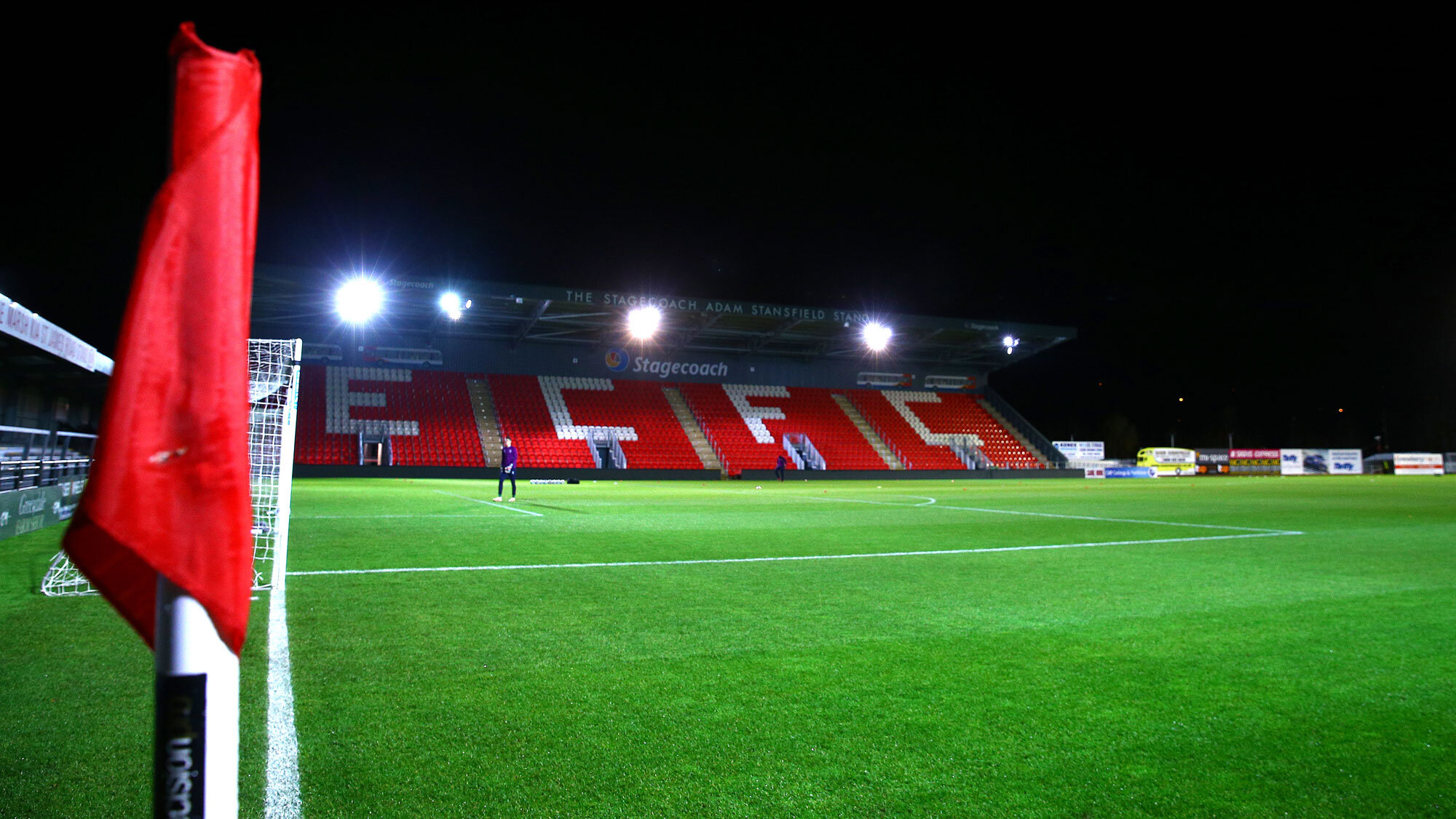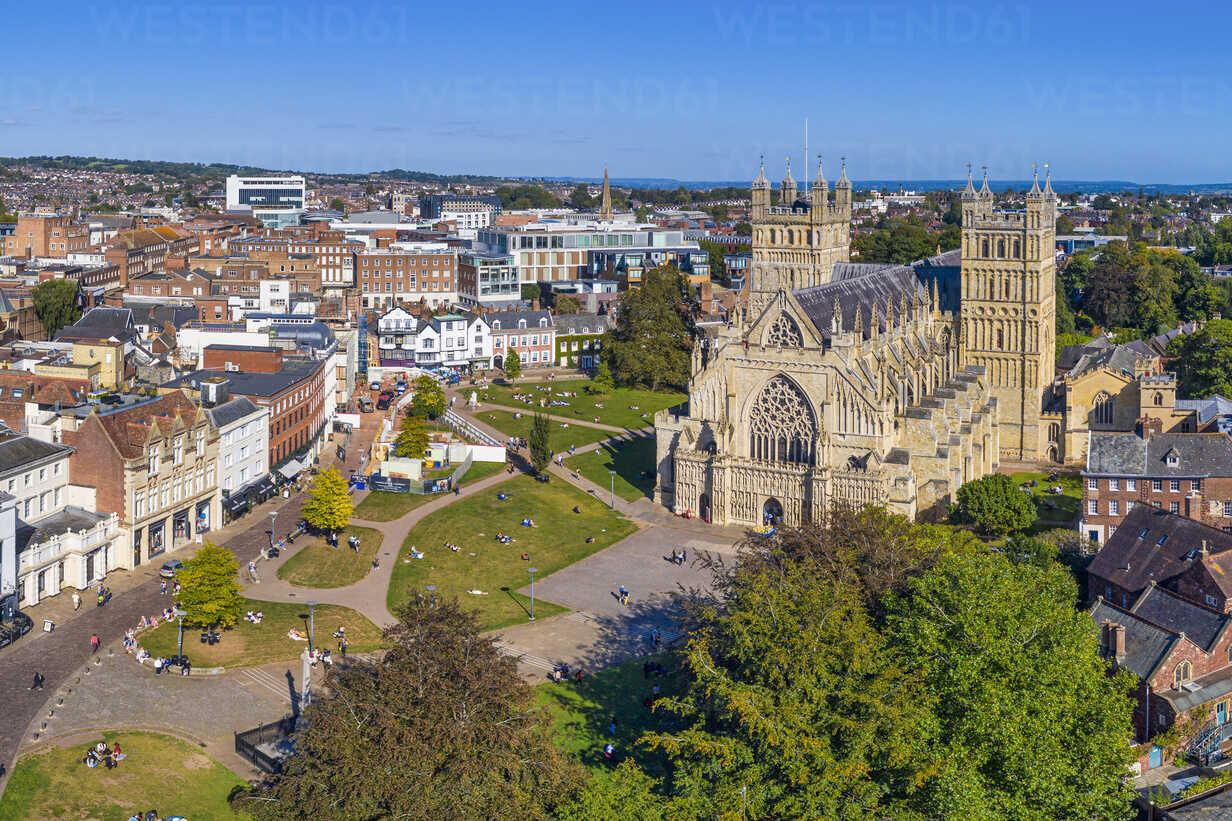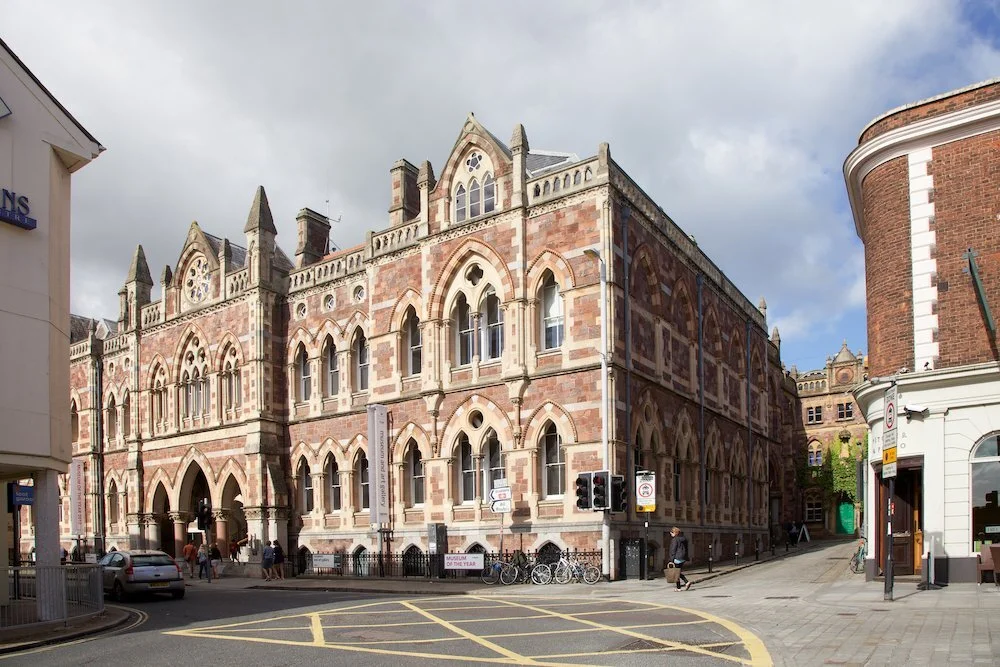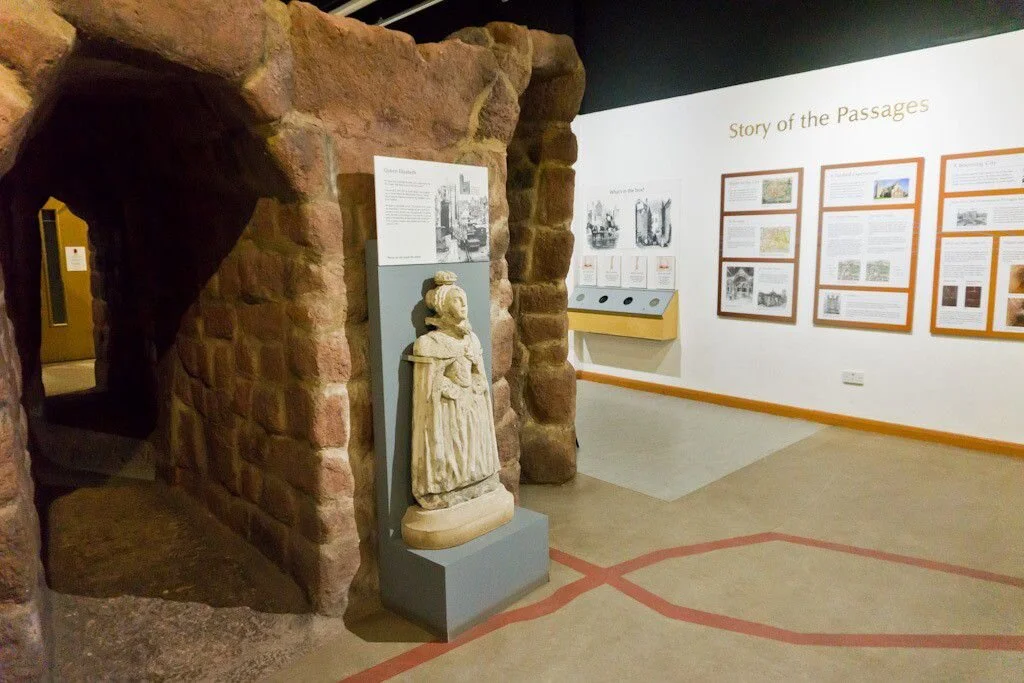
Exeter
St. James Park. Home of Exeter City.
Cathedral
Guildhall
Museum
Quays
Underground Passages
CITY
Introduction:
Exeter is a city and County Town of Devon in South West England which lies on the River Exe and has a current population of 117,800.
Brief History:
The city started as a Roman Fort in AD50 and with little opposition from the local people established a town which they called Isca Dumnoniorum. The Romans remained until 407AD and the population returned to the countryside until the Saxons arrived in the 7th century. They renamed the town Execeaster which eventually became the current name Exeter. After a brief takeover by the Danes, Alfred the Great made the town a burgh leading to a market and mint being created.
The town was again attacked by the Danes in 1003 and they promptly destroyed it. However, Exeter recovered and by 1066 had a population of 2500 and in 1050 a bishop arrived and the cathedral was commenced.
The middle ages saw a variety of trades set up and the town flourished. There was also a flourishing port which exported wool and imported wine. The town continued to develop and was decidedly prosperous by Georgian times. A newspaper, bank, pavements, courts etc. were introduced; however, things were not so rosy for the poor.
The industrial revolution by- passed Exeter and it fell from being 6th largest town in the country, to 60th in 1860. The town declined into a quiet market town and many slums existed.
From this point things could only get better. Sewers and trams arrived and by 1914 the population reached 60,000. Exeter Airport opened in 1937 and then in the Second World War much of the city centre was bombed and many killed. The centre was rebuilt in the 1950’s and the city has not looked back since.
Service industries, including tourism, form the basis of employment and it has become a major regional shopping centre.
Things to Do:
Having turned itself into a regional centre there is much for visitors to do.
Cathedral:
The original Norman cathedral was destroyed leaving the towers in place. The main part of the cathedral was built in the gothic style between 1270 and 1340 and contains the longest stretch of beautiful, unbroken vaulting in the world. It also has stunning stained glass windows and an intricate screen on the west elevation.
Access can be made every day until 5pm but is occasionally shut for services. For information phone 01392 285983. The same number can advise of current admission prices.
Tours of the roof and North Tower can be arranged and there is also a café and shop.
Underground Passages:
The tour of mediaeval underground passages are unique to Exeter. Their original use was to bring clean water to the city and they run under the city centre. This is a guided tour which also includes a video and exhibition presentation.
To book a tour visit the reception area in Paris Street or telephone 01392 665887. Generally, the opening times are to 4.30pm Tuesdays to Saturdays and until 4pm on Sundays (closed Monday).
Historic Guildhall:
The Guildhall is a current working building and so visiting times can be erratic, therefore a call to 01392 665500 is suggested. The main Hall is the part usually open to the public but arrangements to see the Civic Regalia and Silver, and tours of the building, can be made on the same number.
Exeter Quayside:
The historic quayside just a 10 minute walk from the city centre offers the visitor history, architecture and lively pubs and restaurants.
Browsing antique shops and taking boat trips are suggested.
“Visit Exeter” and Exeter City Council have produced an informative leaflet on the web.
Royal Albert Memorial Museum and Art Gallery:
Located in Queen Street this building presents a history of Exeter and Devon life. Displays of art, history, geology, zoology, architecture etc. together with special attractions for children make for an interesting visit.
There is also a shop and café. Entrance is free.
St. Nicholas Priory:
This grade 1 listed building gives an insight to how a Tudor home would have looked. With its Elizabethan furniture and textiles it is a hidden gem. Located in Mint Street, close to the city centre, the attraction is open Easter to October and from Monday to Saturday up to 5pm there is a charge for entry. Information is available on 01392 265858.
Bill Douglas Cinema museum:
This free entrance museum based at the University of Exeter is a very interesting visit for those interested in cinema from its early inception of magic lanterns to modern visual experiences.
It is open to the public 10am to 5pm, seven days a week.
Further afield are Topsham, Exmouth and the south Devon beaches.
Sport:
As well as League football the city is also home to Exeter Chiefs a Premier League Rugby Club.
Night Life:
The city is currently home to four or five mainstream night clubs. They are Cavern, Rococo, The Arena, Timepiece and Warehouse which are scattered through the city. There is also a Gay bar/club called Vaults.
Being a university city and a regional centre there is a plethora of pubs throughout the city, and also the suburbs and nearby villages.
For those who prefer a more genteel evening there are a few theatres to visit, including Barnfield, Northcott and The Bike Shed, which has won the national “most welcoming theatre award”. Between them they give performances of drama, musicals, comedy and new performers.
Cinema is provided by Odeon, Vue and Picturehouse groups.
Eating Out:
With over 400 eating places in the Exeter area there is no problem finding a menu to suit you. Smart restaurants, chic cafes, pubs, farms, hotels are all premises to welcome you..
Shopping:
Exeter really is a shopper’s paradise with an excellent range of national chains, independent shops and major department stores. The main malls are Princesshay, Guildhall and Harlequins.
John Lewis are represented in this city centre and interesting retail is found in the cathedral quarter, castle quarter and quayside.
Accommodation:
Nearly ninety establishments ranging from farms, guest houses to 4 star hotels can be found in the area. National and international chains can be found in the city centre and the nearby airport.
Transport:
As a regional centre located in east Devon, Exeter is a hub for road, rail and air transport.
Road:
Lying at the end of the M5 motorway this enables easy access to the Midlands and North via this motorway and the M6. The M5 and M4 cross to the North West of Bristol which also means good access to London and South Wales.
The A30 takes you to Lands End, in Cornwall via Okehampton, and the A38 to Plymouth in the west of the county. Roads also lead to north Devon and the south coast of England via Honiton, Dorchester, Southampton, Portsmouth to Brighton.
Rail:
Trains run to all main cities direct from Exeter St. Davids and Exeter central. The routes from London leave London Paddington and London Waterloo. The Paddington route continues through Exeter to and from Plymouth, Truro and Lands End. Locally, Exmouth, Torquay and Barnstaple are connected.
Air:
Scheduled flights operate between Exeter Airport and London City, Manchester, Newcastle, Edinburgh, Glasgow and the Channel and Scilly Isles.
The airport is located adjacent to the A30 road to the east of the city.
There is no rail link but Stagecoach route 56 which operates between the city centre and Exmouth visits the airport. Taxis are also available.
Buses:
A comprehensive bus service is run throughout the city by Stagecoach with the Bus Station and High Street being the main locations for starting and ending journeys. A web of routes operate into the nearby countryside and most of Devon. Information can be obtained from Stagecoach on 01392 427711.
Three Park and Ride routes are in operation, between the city centre and Honiton Road, Sowton and Matford Park.
National Express runs several routes to the rest of UK from the central bus station.
Taxis:
Seven firms run a taxi service within the city centre and suburbs.
CLUB
EXETER CITY
Stadium: St. James Park. Stadium Way. Exeter. EX4 6PX.
Founded: 1904
Joined League: 1920
Chairman: Julian Tagg
Manager: Gary Caldwell
Current League: League One.
Phone number: 01392 411243
Email address: reception@exetercityfc.co.uk
Fans Forum: www.exeweb.com
Brief History:
Exeter City, The Grecians, were formed in 1904 and have played continuously, since then, at St. James Park.
In 1908, when Tottenham Hotspur joined the Football League, City was invited to join the Southern League to take their place. Shortly after they beat Weymouth 14-0 in a FA Cup tie. The current colours of red and white were introduced in 1910.
Expansion of the League in 1920 saw Exeter City become a founder member of Division 3, which became Division 3 South in 1921.
When the League was reorganized in the late 1970s, City remained in Division 3 but their history since has been generally bouncing back and forth between the third and fourth tiers.
Disaster struck in 2003 when not finishing bottom of Division 4 they became the first club to be relegated to the Conference from 23rd spot. Joy though, when League status was regained again in 2008. However, history repeated itself and the club reverted to yoyo-ing between the third and fourth levels.
The club is currently owned by the supporters through the Exeter City Supporter’s Trust, and they currently play in League 2.
Match Day:
Tickets:
Away fans should buy their tickets from their own clubs. Check with the club to see if Pay on the Gate applies.
Home fans tickets can be bought online or at the ticket office in the stadium reception area. Entry can be gained on the day by buying at the turnstiles but this costs more.
Ticket office phone number is 01392 411243 and email address reception@exetercityfc.co.uk
Transport:
St. James Park is located right in the city centre and so travel to matches by car is discouraged. There is no car parking at the stadium.
Bus:
Routes E, F1 and F2 run from city centre to adjacent St. James Park and routes 1, 1B, G, K, P, P2 and T run from the city centre to the Odeon which is a 5 minute walk from the stadium.
Exeter Bus Station is just a ten minute walk to the ground.
Trains:
The ground has its own railway station, St. James Park station, which lies on the Avocet line from Exeter St. Davids/Exeter Central to Exmouth. Trains from the rest of the region or nationally arrive at St. Davids or Central stations.
Car:
The road network, as described above, is excellent with the M5 connecting the city to the rest of the country. Using the Park and Ride system is possibly the best way to get to the ground. However, if it is necessary to drive into the centre of the city then there are twelve car parks within walking distance of the stadium and sign posting should be looked for.
Air:
Fans travelling from London, Manchester and Newcastle can fly to Exeter Airport which is accessed to and from the city centre by bus or taxi.
Stadium:
The four stands are the original Grandstand running down one side of the pitch with the newest stand IP Office Stand running full length opposite. These are both covered stands. Another newish stand is Thatchers Big Bank which is one of the largest covered terrace stands in the League and is behind one goal.
Away fans are located in the open St. James Terrace or seated in the Grandstand. The facilities are basic but there is a social club at the ground open to home and away fans.
Being close to the city centre there is a choice of very many pubs, takeaways and cafes to get food and drink.
There is also a club shop at the stadium.






